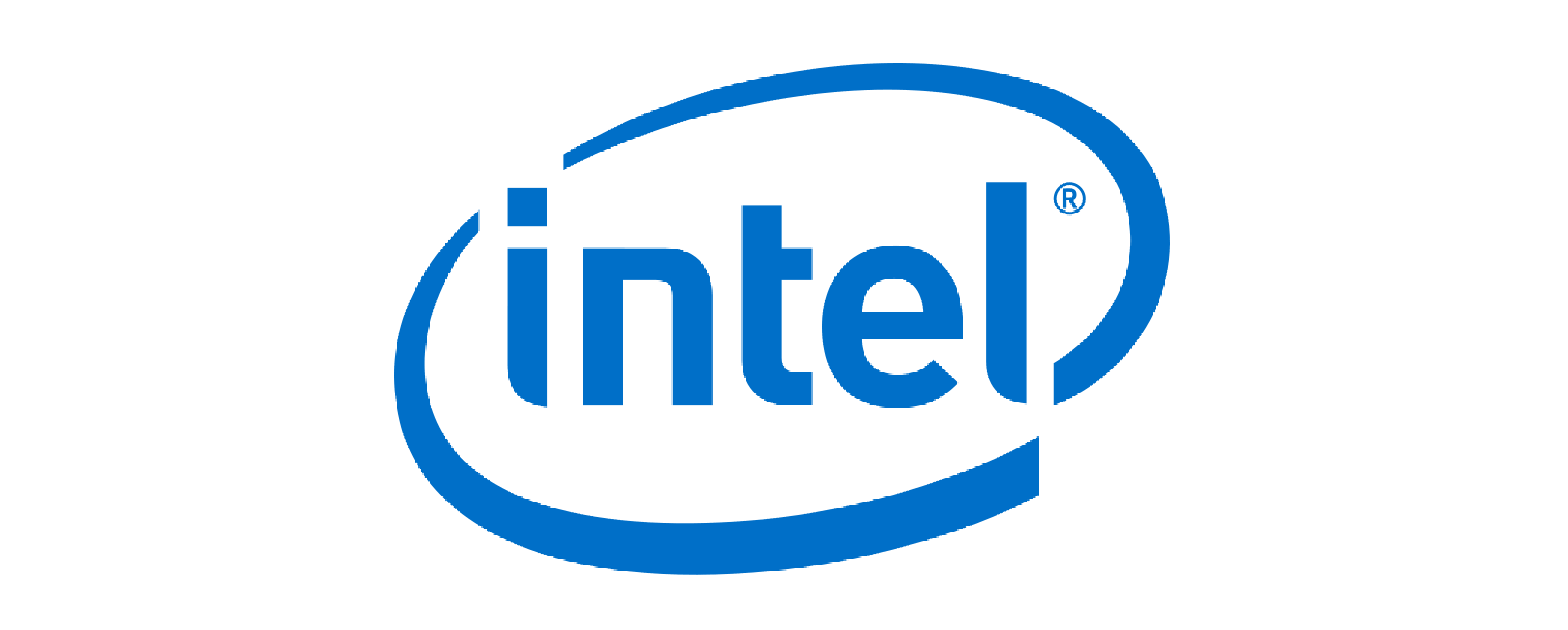The global Substrate-Less Semiconductor Market is witnessing consistent growth, with its size estimated at USD 0.8 Billion in 2025 and projected to reach USD 1.6 Billion by 2033, expanding at a CAGR of 9% during the forecast period.
The Substrate-Less Semiconductor Market Research Report from Future Data Stats delivers an in-depth and insightful analysis of the market landscape, drawing on extensive historical data from 2021 to 2023 to illuminate key trends and growth patterns. Establishing 2024 as a pivotal baseline year, this report meticulously explores consumer behaviors, competitive dynamics, and regulatory influences that are shaping the industry. Beyond mere data analysis, it offers a robust forecast for the years 2025 to 2033, harnessing advanced analytical techniques to chart a clear growth trajectory. By identifying emerging opportunities and anticipating potential challenges, this report equips stakeholders with invaluable insights, empowering them to navigate the ever-evolving market landscape with confidence and strategic foresight.
MARKET OVERVIEW:
The substrate-less semiconductor market aims to enable the development of thinner, lighter, and more flexible electronic devices by removing traditional substrate layers. This shift allows manufacturers to produce components that can bend, stretch, and integrate seamlessly into next-generation technologies like foldable displays and wearable medical sensors. Industry leaders use substrate-less designs to improve energy efficiency and reduce material costs while enhancing device performance. This market supports innovation across sectors by offering greater design freedom and enabling compact, high-performance electronics suitable for modern applications.
MARKET DYNAMICS:
Companies in the substrate-less semiconductor market now focus on integrating flexible and ultra-thin components into consumer electronics, wearables, and medical devices. Recent trends show a rise in the use of 2D materials and printed electronics for high-performance, lightweight applications. Manufacturers also explore advanced fabrication methods like roll-to-roll processing to meet growing demand for compact and flexible designs. Looking ahead, the market shows strong potential in automotive electronics, implantable medical technologies, and aerospace systems. As industries seek more adaptable and energy-efficient solutions, substrate-less semiconductors offer a clear path for innovation. Business opportunities continue to expand as research institutions and startups invest in scalable production methods and new use cases.
Innovations in technology have led manufacturers to seek solutions that minimize space and enhance performance. As industries adopt advanced applications like 5G and IoT, the need for high-speed and low-power components intensifies. Additionally, the shift towards electric vehicles and renewable energy solutions amplifies the demand for substrate-less semiconductors, as these components offer improved thermal management and efficiency. Despite the promising growth, the substrate-less semiconductor market faces challenges. High production costs and technical complexities can hinder widespread adoption. Furthermore, the limited availability of skilled professionals in this niche field may slow down development. However, these challenges present opportunities for companies to invest in research and development. By addressing manufacturing efficiency and exploring innovative materials, firms can capture a larger share of the market. As sustainability becomes a priority, leveraging substrate-less technologies can align with eco-friendly practices, further driving market expansion.
SUBSTRATE-LESS SEMICONDUCTOR MARKET SEGMENTATION ANALYSIS
BY TYPE:
Thin-film semiconductors are driving remarkable progress in the substrate-less semiconductor market due to their low material consumption and compatibility with flexible form factors. These semiconductors allow engineers to fabricate ultra-thin electronic circuits directly onto non-traditional surfaces. Their ability to maintain functional integrity under mechanical stress makes them ideal for next-gen consumer electronics and flexible displays. The demand for ultra-light and bendable devices has placed thin-film materials at the forefront of innovation. Flexible and stretchable semiconductors have gained momentum as the market shifts toward electronics that conform to curved or moving surfaces. These materials, typically composed of stretchable polymers or hybrid nanomaterials, enable integration into wearable tech, biomedical implants, and soft robotics. Their mechanical resilience and durability in dynamic environments have made them critical to product differentiation in competitive markets. As more applications demand adaptability, this segment continues to expand at an impressive pace.
Organic and polymer-based semiconductors stand out for their low-cost production and environmental sustainability. These materials are easy to process at low temperatures, which supports roll-to-roll and inkjet printing technologies. Their utility in disposable medical devices, biosensors, and low-end displays is growing steadily. Startups and academic labs especially favor them due to their accessibility and potential for experimentation, which is further fueling innovation. Amorphous and crystalline semiconductors, including 2D materials, bridge performance with novel applications. Crystalline materials such as silicon nanomembranes offer excellent charge mobility, while amorphous materials provide fabrication flexibility. Meanwhile, 2D material-based semiconductors, like graphene and molybdenum disulfide, push the boundaries of miniaturization and performance. Their atomically-thin nature opens doors for transparent electronics and advanced photodetectors, making them key players in futuristic tech.
BY APPLICATION:
Consumer electronics represent a major application area for substrate-less semiconductors due to their demand for lightweight, flexible, and energy-efficient devices. Smartphones, tablets, foldable screens, and wearable gadgets benefit from the slim profile and adaptability of substrate-less designs. As design constraints tighten, manufacturers are turning to these materials to enable sleeker, thinner, and multifunctional products, sparking massive R&D investments. Wearable health devices are benefiting significantly from this market’s evolution. Substrate-less semiconductors allow integration of sensors and circuits into fabrics, skin patches, and ultra-thin materials that comfortably monitor health metrics. Their biocompatibility and mechanical compliance enable long-term wear without discomfort. These features are especially critical in patient monitoring systems, where constant data acquisition must remain unobtrusive and reliable.
Automotive and transport systems are embracing these semiconductors for their ability to operate in high-vibration, space-constrained environments. Flexible electronics are embedded in curved dashboards, lighting systems, and even seats for climate and posture monitoring. Furthermore, advanced driver-assistance systems (ADAS) and electric vehicles are pushing the integration of these components for lightweight and efficient design optimization. Industrial IoT and smart manufacturing leverage substrate-less semiconductors for building distributed sensor networks across factory floors. These semiconductors enable the embedding of electronics onto tools, surfaces, or even pipes without bulky hardware. They assist in real-time process monitoring, predictive maintenance, and autonomous decision-making. The trend toward Industry 4.0 has significantly boosted the need for robust, low-profile sensor integration that substrate-less technology can uniquely fulfill.
BY TECHNOLOGY:
Printed and flexible electronics dominate this market thanks to their scalability and cost efficiency. Techniques like screen printing, gravure, and inkjet allow the creation of entire circuits on flexible substrates with minimal waste. These methods are particularly suited for high-volume production of wearables, smart labels, and disposable electronics. Their appeal lies in simplified manufacturing workflows and compatibility with a wide range of substrate-less materials. Photolithographic processing still plays a critical role, particularly when high-resolution patterning is needed. Though traditionally associated with rigid semiconductors, its adaptation to flexible formats has proven essential for precise component fabrication. Advanced photolithography enables the integration of complex microstructures on thin films, which is crucial for sensors, ICs, and other high-performance devices.
Roll-to-roll manufacturing offers unmatched speed and scalability for producing large volumes of flexible electronics. This continuous production method applies layers of materials over rolls of film, drastically reducing manufacturing time and cost. It’s a game-changer for markets like smart packaging, flexible displays, and low-cost solar panels. As more companies look to scale their operations, this method’s efficiency and adaptability make it a dominant force. Inkjet and nanoimprint printing allow rapid prototyping and fine-tuned customization of circuits, sensors, and optoelectronic components. Inkjet printing facilitates material-efficient design with minimal steps, while nanoimprint offers precise replication of nanostructures. These technologies are paving the way for highly integrated systems in biomedical and consumer applications. Emerging microfabrication techniques, such as laser patterning and self-assembly, are also gaining traction, especially in experimental research and niche applications.
BY COMPONENT:
Transistors are the backbone of substrate-less semiconductor devices. As miniaturization trends continue, flexible transistors made from organic and 2D materials are being widely deployed in logic circuits, amplifiers, and display drivers. These transistors offer low voltage operation and mechanical flexibility, which is essential for compact and energy-efficient systems across various sectors, from healthcare to consumer electronics. Diodes in substrate-less configurations contribute to innovations in rectification and light emission. Organic light-emitting diodes (OLEDs), for instance, have transformed display technology with their vivid color profiles and thin profiles. Substrate-less diodes also serve crucial roles in energy conversion and RF signal processing, making them indispensable components across wearable and portable applications.
Integrated circuits (ICs) built on flexible or non-substrate platforms enable compact and lightweight solutions for data processing and storage. These ICs are being incorporated into flexible smart cards, rollable electronics, and even implantable devices. Their ability to deliver computational power without bulk significantly enhances product design freedom and application scope, particularly in space- and weight-sensitive industries. Sensors and other passive components—like capacitors and resistors—form the sensory and energy distribution networks within advanced systems. Substrate-less designs allow these components to be seamlessly embedded into fabrics, plastics, or even skin-like materials. From motion tracking in wearables to temperature and pressure monitoring in industrial systems, the demand for passive components that function without rigid substrates continues to climb.
BY END-USER:
Consumer electronics companies are at the forefront of adopting substrate-less semiconductors due to the relentless push for thinner, lighter, and more immersive devices. Firms are using these technologies to power foldable phones, AR/VR glasses, and smart earbuds. The freedom of form and the reduction in materials allow innovative designs that capture consumer attention and drive product differentiation in crowded markets. Automotive OEMs are investing heavily in flexible semiconductors to meet the demands of next-generation vehicles. These materials allow sensor integration in non-flat surfaces, provide advanced lighting solutions, and improve dashboard design with minimal weight addition. As electric and autonomous vehicle technologies evolve, substrate-less electronics will help in reducing system complexity while enhancing reliability and aesthetic appeal.
Healthcare technology providers rely on substrate-less semiconductors for real-time diagnostics, wearable patches, and even implantable devices. These components ensure biocompatibility, comfort, and reliability—qualities essential for long-term use in monitoring chronic conditions or delivering therapy. Innovations in this space are improving patient outcomes and enabling precision medicine applications. Aerospace & defense contractors, along with industrial equipment manufacturers, see substrate-less semiconductors as a path to reduce system weight and boost durability under extreme conditions. Meanwhile, R&D institutes and universities act as early adopters and incubators of innovation, experimenting with new materials and methods. Their role in pioneering foundational technologies continues to shape the market’s direction and foster cross-industry collaboration.
REGIONAL ANALYSIS:
North America leads the substrate-less semiconductor market with strong investment in advanced electronics and flexible device innovation. Major tech firms in the U.S. and Canada continue to adopt next-generation semiconductor technologies for applications in defense, healthcare, and consumer devices. Europe follows closely, driven by demand from the automotive and industrial sectors, where flexibility and energy efficiency remain top priorities.
Asia Pacific shows rapid growth due to the presence of major electronics manufacturers and expanding R\&D in countries like China, Japan, and South Korea. Latin America sees gradual adoption, mainly through medical and agricultural technology use cases. In the Middle East and Africa, the market is still emerging but shows promise with growing interest in smart infrastructure and portable electronics.
MERGERS & ACQUISITIONS:
- In Jan 2024: Intel announced a breakthrough in substrate-less chip manufacturing.
- In Feb 2024: TSMC acquired a startup specializing in substrate-less wafer technology.
- In Mar 2024: Samsung Semiconductor unveiled a new substrate-less memory chip prototype.
- In Apr 2024: GlobalFoundries partnered with a research lab for advanced substrate-less processes.
- In May 2024: Micron Technology invested $500M in substrate-less R&D.
- In Jun 2024: SK Hynix merged with a substrate-less materials supplier.
- In Jul 2024: Texas Instruments launched its first commercial substrate-less IC.
- In Aug 2024: NXP Semiconductors acquired a substrate-less design firm.
- In Sep 2024: Broadcom filed patents for next-gen substrate-less architectures.
- In Oct 2024: Qualcomm partnered with a foundry for substrate-less 5G chips.
- In Nov 2024: AMD announced a new substrate-less processor lineup.
- In Dec 2024: ASML developed a lithography tool optimized for substrate-less production.
KEYMARKET PLAYERS:
- Intel
- TSMC
- Samsung Semiconductor
- GlobalFoundries
- Micron Technology
- SK Hynix
- Texas Instruments
- NXP Semiconductors
- Broadcom
- Qualcomm
- AMD
- Applied Materials
- ASML
- Lam Research
- KLA Corporation
- ON Semiconductor
- STMicroelectronics
- Infineon Technologies
- Analog Devices
- Tokyo Electron (TEL)
Substrate-Less Semiconductor Market: Table of Contents
Executive Summary
- Market Highlights
- Key Insights
- Strategic Recommendations
Market Introduction
- Definition and Scope
- Research Methodology
- Assumptions and Limitations
Market Overview
- Market Dynamics
- Primary Drivers
- Key Restraints
- Emerging Opportunities
- Major Challenges
- Industry Trends & Innovations
- Value Chain Analysis
- Porter’s Five Forces
Market Segmentation
- By Type
- By Application
- By Technology
- By Component
- By End-User
Regional Outlook
- North America
- Europe
- Asia-Pacific
- Latin America
- Middle East & Africa
Competitive Intelligence
- Market Share Analysis
- Strategic Positioning
- Recent Developments
Key Company Profiles
- Company A
- Company B
- Company C
- Additional Players
List of Figures
- Global Market Size Forecast
- Technology Adoption Curve
- Regional Penetration Chart
- Market Share by Type and Application
List of Tables
- Segmentation Overview
- Regional Revenue Estimates
- Competitive Benchmark Matrix
- Innovation Funding by Region
- Application-Wise Demand Projections
Substrate-Less Semiconductor Market Segmentation
By Type:
- Thin-Film Semiconductors
- Flexible and Stretchable Semiconductors
- Organic and Polymer-Based Semiconductors
- Amorphous and Crystalline Semiconductors
- 2D Material-Based Semiconductors
By Application:
- Consumer Electronics
- Wearable Health Devices
- Automotive and Transport Systems
- Industrial IoT and Smart Manufacturing
- Aerospace and Defense Electronics
- Energy Harvesting and Power Devices
- Medical and Implantable Electronics
- Others
By Technology:
- Printed and Flexible Electronics
- Photolithographic Processing
- Roll-to-Roll Manufacturing
- Inkjet and Nanoimprint Printing
- Emerging Microfabrication Techniques
By Component:
- Transistors
- Diodes
- Integrated Circuits
- Sensors
- Other Passive Components
By End-User:
- Consumer Electronics Companies
- Automotive OEMs
- Healthcare Technology Providers
- Aerospace & Defense Contractors
- Industrial Equipment Manufacturers
- R&D Institutes and Universities
By Geography:
- North America (USA, Canada, Mexico)
- Europe (UK, Germany, France, Italy, Spain, Rest of Europe)
- Asia-Pacific (China, Japan, Australia, South Korea, India, Rest of Asia-Pacific)
- South America (Brazil, Argentina, Rest of South America)
- Middle East and Africa (GCC Countries, South Africa, Rest of MEA)
Why Investing in a Market Research Report?
Make Informed Decisions with Confidence: A market research report offers more than just data—it provides actionable insights. Whether you're launching a new product or expanding into new regions, reliable research helps you make decisions backed by real-world trends, customer behaviors, and competitive benchmarks. This reduces guesswork and increases your odds of success.
Discover Untapped Market Opportunities: One of the biggest advantages of a research report is its ability to reveal gaps in the market. You'll uncover unmet customer needs, rising demand, and emerging trends—well before they become mainstream. This positions your business to act early and gain a first-mover advantage.
Understand Your Competitors in Detail: Knowing who you’re up against is crucial. A comprehensive report shows how your competitors operate, where they excel, and where they fall short. With this intel, you can sharpen your value proposition, strengthen your brand position, and outpace others in your space.
Craft Smarter Marketing Strategies: Effective marketing starts with knowing your audience. Research reports break down customer demographics, buying behavior, and preferences. With this clarity, you can design targeted campaigns that speak directly to your audience and deliver better ROI.
Identify Risks Early and Reduce Uncertainty: Every business faces risks—but they don’t have to be surprises. A good report highlights possible roadblocks, shifts in demand, or industry disruptions. By anticipating these challenges, you can take preventive action and protect your business from costly setbacks.
Support Your Business Case for Funding: Whether you're pitching to investors or applying for loans, having a credible, data-backed report gives your proposal weight. It shows you’ve done your homework and understand the market, which builds trust and increases your chances of securing support.
Stay Relevant in a Rapidly Changing Market: Consumer needs, tech innovations, and regulations evolve constantly. Continuous access to updated market research helps you track these changes and adapt accordingly—keeping your business agile and future-ready.
RESEARCH METHODOLOGY AT FUTURE DATA STATS
At Future Data Stats, we combine industry acumen with modern research practices to deliver credible, real-world market intelligence. Our approach is grounded in data accuracy, actionable insights, and strategic foresight—helping businesses make smarter, faster decisions in an ever-evolving global landscape.
Strategic and Comprehensive Market Evaluation
We go beyond basic metrics to provide a deeper understanding of market behavior. Our methodology is built to:
- Measure current market size and forecast growth with high precision.
- Map competitive positioning and assess market saturation or potential gaps.
- Track upcoming opportunities using trend analytics and predictive modeling.
- Cross-validate every insight through expert consultation and data triangulation.
This 360° approach ensures that stakeholders receive not just data, but relevant, future-ready intelligence.
Robust Data Collection and Validation
Our research is powered by multi-source inputs for enhanced credibility and relevance. We rely on:
- Primary research through interviews with CEOs, suppliers, investors, and industry influencers.
- Secondary data from government databases, trade publications, and global research institutions.
- Localized insights capturing region-specific demand patterns and economic shifts.
- Custom models built around the nuances of each sector, ensuring tailored outputs.
Each data point undergoes a verification process, minimizing biases and ensuring consistency.
Core Strengths of Our Research Process
- Real-Time Intelligence: Reports that reflect current market conditions and future trajectories.
- Advanced Validation Tools: AI-assisted tools to verify patterns, filter anomalies, and sharpen forecasts.
- Independent Perspective: Neutral analysis that supports objective, fact-based decision-making.
Our Dual-Layer Research Model
Primary Research – Real-World Industry Contact
- 25+ hours of stakeholder interviews per project.
- Customized surveys for KOLs to gather qualitative insights.
- Comparative assessments to evaluate competitive dynamics.
Secondary Research – Exhaustive Desk Analysis
- Review of 3,000+ sources, including industry databases, white papers, and compliance filings.
- Collection of economic and sector data from recognized financial and government portals.
- Pattern analysis to identify long-term market shifts and macroeconomic influences.
Top-Down & Bottom-Up Accuracy
We use a blended analytical approach to enhance precision:
- Bottom-Up Approach: Aggregates granular data to build a detailed market structure.
- Top-Down Approach: Aligns projections with high-level industry trends and macro indicators.
Together, they create a balanced framework for trustworthy forecasting.
Why Future Data Stats?
- 70+ years of collective expertise behind every report.
- Bespoke research design tailored to client goals and industry type.
- Transparent processes that prioritize reliability and strategic value.
With Future Data Stats, you're not just investing in information—you're investing in clarity, direction, and market leadership.
Substrate-Less Semiconductor Market Dynamic Factors
Drivers:
- Manufacturers adopt flexible electronics to reduce device size and weight.
- Growing demand for wearable and foldable smart devices.
- Advancements in 2D material fabrication technologies.
Restraints:
- High initial development and fabrication costs.
- Limited large-scale manufacturing capabilities.
- Material reliability issues under stress or bending.
Opportunities:
- Integration into next-gen medical and implantable devices.
- Expansion in aerospace electronics and defense sectors.
- Growing R&D in flexible and printable electronics.
Challenges:
- Standardizing production techniques across vendors.
- Maintaining high performance without substrates.
- Ensuring long-term durability under flexible conditions.
Substrate-Less Semiconductor Market Regional Key Trends Analysis
North America:
- Tech giants invest in flexible IC development.
- Defense sector adopts substrate-less sensors.
- Wearable health tech drives commercial adoption.
Europe:
- Automotive OEMs integrate flexible semiconductors.
- Sustainability pushes organic semiconductor R&D.
- Medical wearables gain traction in healthcare systems.
Asia-Pacific:
- Consumer electronics demand boosts mass production.
- Governments support local semiconductor startups.
- Strong adoption in next-gen display manufacturing.
Latin America:
- Growth in smart agriculture sensors.
- Import reliance fuels local innovation efforts.
- Academic institutions focus on flexible tech R&D.
Middle East & Africa:
- Smart city projects explore thin-film applications.
- Defense modernization boosts sensor integration.
- Limited infrastructure delays large-scale adoption.
Frequently Asked Questions















